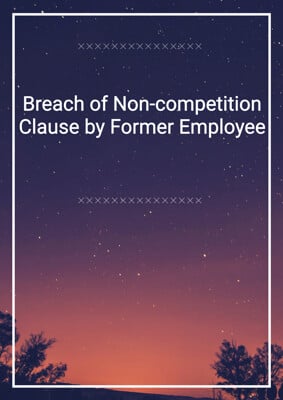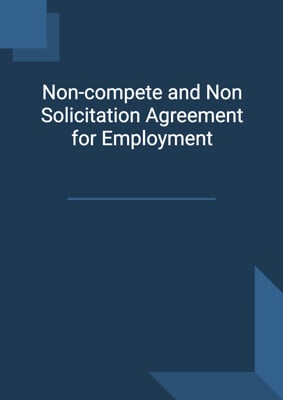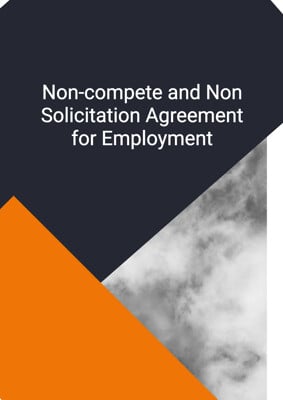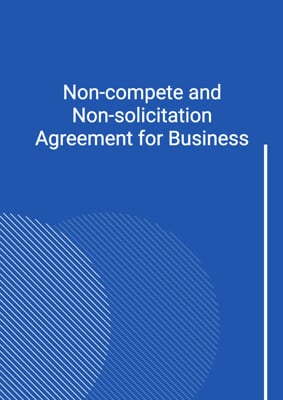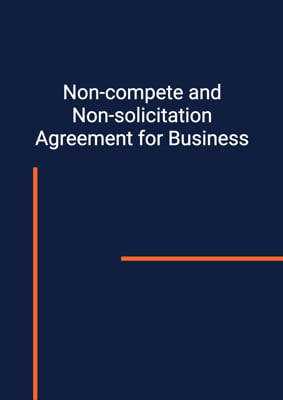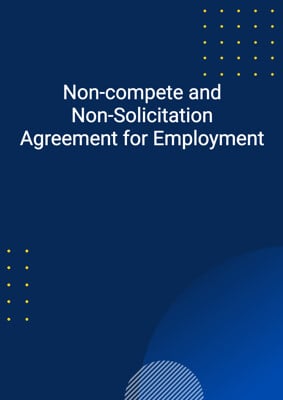
Cease and Desist Letter
Non Solicitation or Non Compete
A cease and desist letter to the party in breach to stop any breach of non-solicitation and non-compete agreement or face legal action from the party whose contractual right has been violated. or face legal action from the party whose contractual right has been violated.
How to Tailor the Document for Your Need?
01
Create Document
Click "Create Document" button and the document will be prepared with your account details automatically filled in.
02
Fill Information
Please fill in any additional information by following the step-by-step guide on the left hand side of the preview document and click the "Next" button.
03
Get Document
When you are done, click the "Get Document" button and you can download the document in Word or PDF format.
04
Review Document
Please review the document carefully and make any final modifications to ensure that the details are correct before sending to the addressee.
Document Preview
Document Description
The Cease and Desist Letter is a document that is used to address a breach of agreement between two parties i.e. in case of violation of non compete agreement letter . It is an important document as it serves as a formal notice to the counterparty that they are in violation of the agreement and demands them to immediately cease and remedy the breach. The letter highlights the specific clause of the agreement that has been breached, which in this case is the non-compete/non-solicitation clause.
The document begins with the title 'Cease and Desist Letter' followed by the content. The content starts with the account job company and address, as well as the account email. It then addresses the counterparty by providing their name and address. The current date is also mentioned to establish the timeline.
The letter starts with a formal greeting to the counterparty and states the purpose of the letter, which is to address the breach of agreement. It mentions the specific clause of the agreement that has been violated and provides a brief explanation of the prohibited actions. The letter emphasizes that the counterparty's actions are in direct violation of the agreement.
The document then proceeds to outline the damages that the sender has suffered as a result of the breach. The damages are described in detail to provide a clear understanding of the impact caused by the counterparty's actions.
Following the description of damages, the letter demands the counterparty to immediately cease and remedy the breach. It specifically mentions the non-compete/non-solicitation commitments under the agreement and requests the counterparty to provide a list of all employees, competitors, customers, and potential customers with whom they have been in contact. This is to assess the scope of the breach.
The letter warns the counterparty of the consequences if they fail to comply with the demand. It states that legal action will be taken, including filing a lawsuit in court. The potential legal actions mentioned include seeking preliminary and permanent injunctions, monetary damages, reimbursement of lawyer's fees, and damages to the sender's goodwill.
To avoid legal action, the counterparty is given a deadline of seven days to acknowledge the letter and confirm their intention to cease and desist. The letter emphasizes that failure to comply will result in immediate legal action to protect the sender's interests. It concludes by stating that no further warning letters will be sent and a lawsuit will be commenced if the breach is not ceased.
The letter is signed with the account sign block, indicating the sender's identity and authority.
In summary, the Cease and Desist Letter is a detailed document that addresses a breach of agreement. It provides a clear description of the breach, outlines the damages suffered, and demands the counterparty to cease and remedy the breach. It warns of the potential legal consequences and sets a deadline for compliance to avoid legal action.
How to use this document?
1. Identify the parties: Enter the account job company and address, as well as the account email in the designated sections of the letter. This ensures that the sender's information is clearly stated.
2. Address the counterparty: Provide the name and address of the counterparty in the appropriate section. This establishes the recipient of the letter.
3. State the current date: Include the current date in the letter to establish the timeline of the communication.
4. Explain the breach: Clearly state the specific clause of the agreement that has been breached and provide a brief explanation of the prohibited actions. This helps the counterparty understand the nature of the breach.
5. Describe the damages: Detail the damages that the sender has suffered as a result of the breach. This provides a clear understanding of the impact caused by the counterparty's actions.
6. Demand cease and desist: Clearly demand the counterparty to immediately cease and remedy the breach. Specifically mention the non-compete/non-solicitation commitments under the agreement. Request a list of all employees, competitors, customers, and potential customers with whom the counterparty has been in contact to assess the scope of the breach.
7. Warn of legal action: Clearly state the potential legal actions that will be taken if the counterparty fails to comply with the demand. Mention seeking preliminary and permanent injunctions, monetary damages, reimbursement of lawyer's fees, and damages to the sender's goodwill.
8. Set a deadline: Provide a deadline of seven days for the counterparty to acknowledge the letter and confirm their intention to cease and desist. Emphasize that failure to comply will result in immediate legal action.
9. Conclude firmly: State that no further warning letters will be sent and a lawsuit will be commenced if the breach is not ceased. Sign the letter with the account sign block to indicate the sender's identity and authority.
Note: This guidance provides a concise and practical overview of the steps to use the document effectively. It focuses on the real practice and implications rather than the completion of the document.
Not the right document?
Don’t worry, we have thousands of documents for you to choose from:

